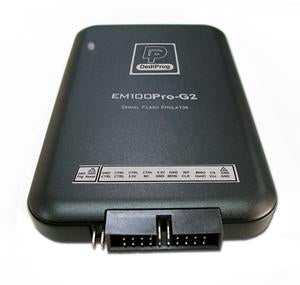

Exercise Your SPI Bus in Many Ways!
This application provides state-of-the-art host adapter functionality. With this application you will be able to actively exercise your SPI bus in many ways.
What's included
- The SPI Active - Level 1 Application is a download that runs on your Promira Serial Platform unit. Once you have purchased a Promira Serial Platform unit, you'll be able to instantly download and add new applications as they become available.
- All applications include one full year of software maintenance. As long as your software maintenance is current, you can take advantage of our five-star support. Any time you purchase a new application for your Promira Serial Platform, we'll automatically extend the software maintenance for all applications that have current maintenance support (applications that are out of support do not receive this benefit, so it's always best to keep the maintenance current on your applications). That means if you purchase one new application per year, all your applications will be eligible for software support.
My AutoQuote | Easy & Fast
Easily generate and keep track of your quotes. You can also place an order based on an active quote. Both Quotes and Orders are organized for you under your account page.
More informationSpecifications
| Bit Rate SPI Master | 31 KHz - 12.5 MHz (40MHz with Level 2 | 80MHz with Level 3) |
| Bit Rate SPI Slave | 31 KHz - 8 MHz (20MHz with Level 2 and Level 3) |
| Target Bus Interface | SPI Master/Slave. 2 configurable GPIOs |
| DC Characteristics (Promira platform) Target Power | +5V, 100 mA max (pins 4 and 6) |
| Supplementary I/O Power | 0.9 V - 3.45 V, 100 mA max (pins 22 and 24) |
Product information
| This application provides state-of-the-art host adapter functionality. With this application you will be able to actively exercise your SPI bus in many ways | |
| Features |
|
| The all-new architecture of the SPI Active - Level 1 Application running on the Promira Serial Platform provides superior performance. With many new embedded features such as integrated voltage level-shifting, advanced message queuing, High-speed USB or Ethernet connectivity to your analysis PC and many more, debugging or programming your SPI system has never been easier or faster. | |
| Once you're running the SPI Active - Level 1 Application on your Promira platform you can create your own interface using Total Phase's robust API or select from our no charge GUIs: Control Center Serial or Flash Center to control your SPI data. | |
| The purchase of your SPI Active - Level 1 Application includes one year of support, allowing you to download any updates for this application for 12 months after purchase. | |
| Target Bus Interface |
|
| DC Characteristics (Promira) |
|
| SPI |
|
| GPIO - General Purpose IO |
|










